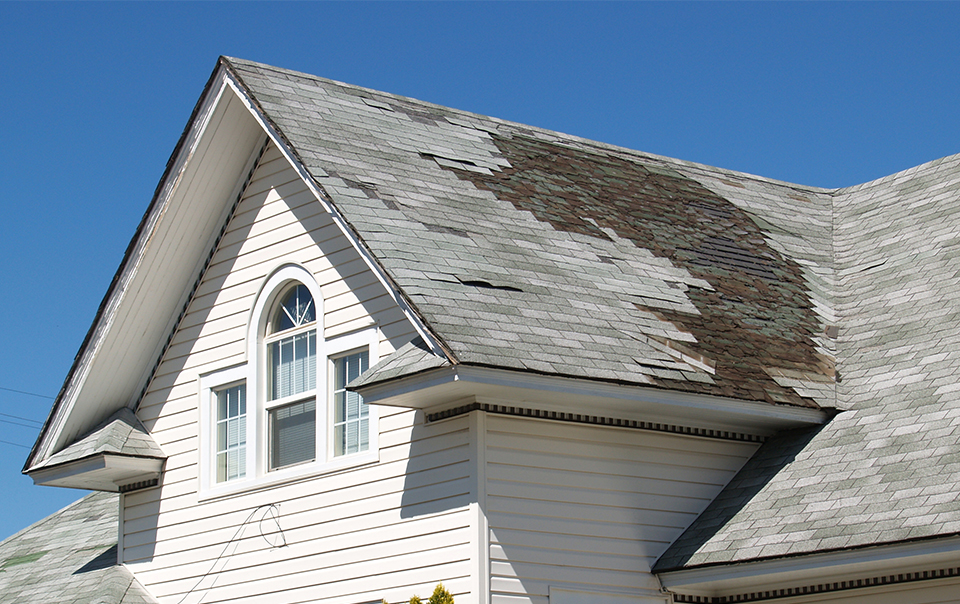Homeowners Insurance for Wind Damage


Most homeowners policies cover wind damage, one of the most common causes of damage from storms. According to the Insurance Information Institute, research shows that homeowners filed more claims between 2014 and 2018 due to wind and hail damage than any other type of loss, including fire, water damage or theft.
Typically, homeowners insurance offers some wind damage coverage for the costs of repair and replacement associated with a bad storm. Be sure to check your homeowners policy to understand what it covers.
What is considered wind damage under a homeowners policy?
Generally, most damage caused by wind in any type of storm is considered wind damage and is covered under a homeowners policy. Damaging winds can cause destruction to roofs, windows and more.
There are several types of storms that can cause wind damage that typically fall under the coverage in a homeowners policy, including:
- Tornado
- Hurricane
- Thunderstorm
- Hailstorm
- Microburst
- Derecho
- Nor’easter
Is wind damage covered by home insurance?
Yes, as noted above, homeowners insurance typically covers most types of wind damage. Usually, the dwelling coverage of your homeowners policy will help pay to repair or replace damage to the roof, siding or windows due to a wind event. Your homeowners policy also includes personal property coverage that may help to repair or replace items that become damaged due to a wind event.
You should review and understand what your policy covers, including coverage limits, deductibles and exclusions. In some states, there may be special deductibles that are higher for some windstorms, such as hurricanes.
Does homeowners insurance cover wind damage to roofs?
Depending on the type of policy you have, your homeowners insurance likely covers wind damage to the roof of your home. If you have other structures coverage, you may be covered for wind damage to roofs on other structures on your property, like a shed or freestanding garage.
Your policy will explain coverage for roof damage repair or replacement due to a wind event. Certain things like the age of your roof or unresolved maintenance issues may factor in to how much of the costs will be covered to repair the damage or replace the roof. Your insurance carrier will evaluate the damage, including any damage that may have existed prior to the wind event, and determine the appropriate reimbursement. Talk to your Travelers representative if you’d like to know more about the process.
Does homeowners insurance cover wind damage to siding?
Like your roof, siding is an important component that protects the look and structure of your home. Fortunately, your homeowners insurance likely does cover wind damage to vinyl, metal and other kinds of siding. Your coverage will help pay to replace wind-damaged siding with siding that assures a reasonably uniform visual appearance.
Does homeowners insurance cover wind damage to fences?
If you have other structures coverage in your homeowners policy, wind damage to a fence on your property is generally covered. Typically, standard homeowners policies pay you the actual cash value of the fence after it is damaged or destroyed. You will receive payment for the fence up to its value, minus the deductible and the amount the fence has depreciated since its purchase.
Protect your home
Wind-driven events have the potential to cause significant damage to your home. While your homeowners insurance helps protect your investment, it is equally important to take proactive measures to help secure your home from the damage of high winds. Here’s what you can do:
- Protect your roof. Regular roof inspection is an important safeguard. You can start by doing your own site inspection. Walk a short distance from your house and use a pair of binoculars to inspect your roof. Note any missing or loose shingles or tiles and get those repaired or replaced by a licensed contractor. From the attic, check areas where wiring enters your roof. If you can see daylight, seal those areas. Finally, check your gutters and downspouts. Make sure they are clear of debris and firmly attached to your house.
- Inspect your siding. Carefully inspect your siding and fix any deterioration. This includes reattaching loose siding and resealing siding around doors and windows, water lines, the dryer vent and where wires enter the home.
- Eliminate projectiles. If you know a windstorm is approaching, remove or secure all outside items that could become projectiles and cause damage to your home. These include lawn furniture, hanging baskets, grills, bicycles, toys and dead or overhanging tree branches.
Be prepared
Travelers offers these additional tips to help you prepare ahead of time for windy weather:
- How to Help Prepare for a Hurricane
- 7 Steps to Prepare an Emergency Evacuation Plan
- 4 Tips to Help You Stay Safe During a Natural Disaster
Your home is your largest investment. Be sure it is protected from wind damage. Find a Travelers representative near you to get a home insurance quote.



